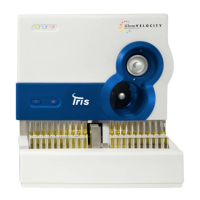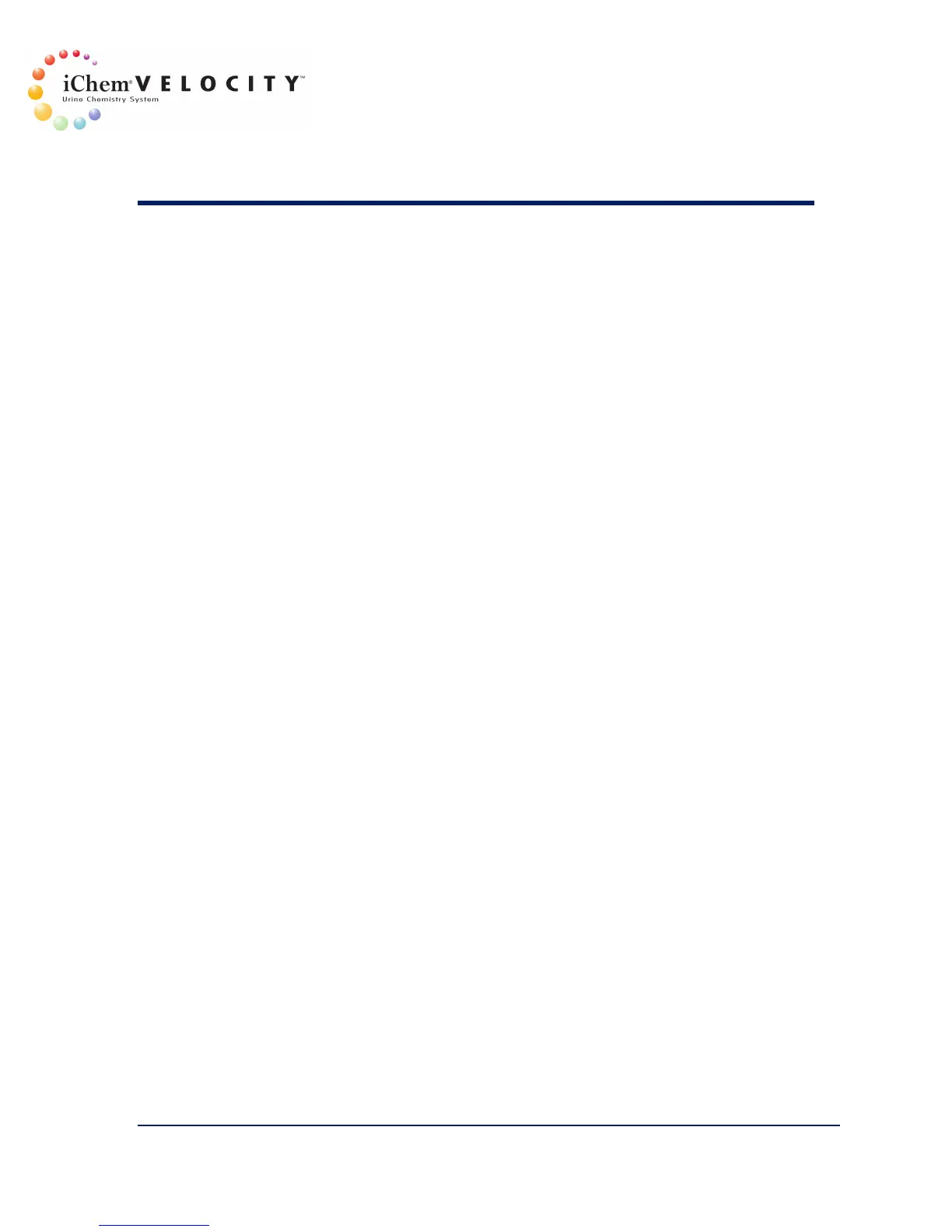11 Appendix
301-7146 English Rev B 11/02/2011 Operator’s Manual NA 226
Principles of the Tests and Limitations of the
Procedure
Bilirubin
This test is based on the coupling of bilirubin with diazonium salt in an
acidic medium. A pinkish tan color proportional to bilirubin concentration
is generated.
• Expected Values: In normal urine, no detectable level of bilirubin
should be obtained. Positive results require further investigation.
• Sensitivity: 1.8 mg/dL bilirubin
• Performance Characteristics: The test is specifically developed for
bilirubin. Biliverdin does not react with this test pad.
• Limitations: Some urine specimens may contain impurities such as
food dyes and therapeutic pigments to produce a yellowish or reddish
discoloration of the test pad that may lead to the interference.
Elevated concentrations of nitrite may inhibit the reaction. Bilirubin is
light sensitive and prolonged exposure of urine specimens to light
may result in diminished or false negative values. Elevated
urobilinogen concentrations may slightly enhance the response of this
test pad. Ascorbic acid concentrations ≥ 300 mg/dL may interfere with
the test. MESNA concentrations ≥ 1140 mg/dL may cause false
negative results.
Urobilinogen
This test is based on the coupling reaction of urobilinogen with a stable
diazonium salt in buffer. A pink to red color proportional to the
urobilinogen concentration is generated.
• Expected Values: In normal urine, urobilinogen is usually present at
concentration up to 1 mg/dL. A result of 2 mg/dL represents the
transition from normal to abnormal state and the specimen should be
investigated further for possible liver disease and hemolytic disorders.
• Sensitivity: 1.6 mg/dL urobilinogen
• Performance Characteristics: The diazonium-based test is more
specific for urobilinogen than Ehrlich’s reagent based- test. Test strips
cannot determine the absence of urobilinogen, which may be
significant in biliary obstruction.
• Limitations: This test is inhibited by elevated concentrations of
formaldehyde and nitrite concentrations ≥ 10 mg/dL. Food dyes and

